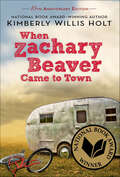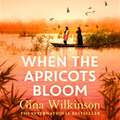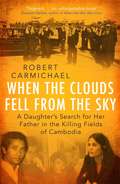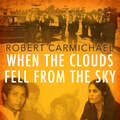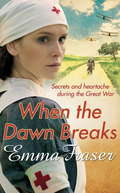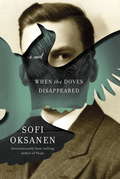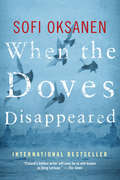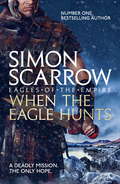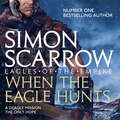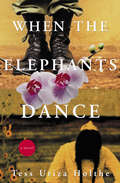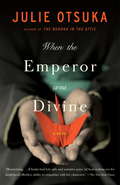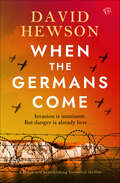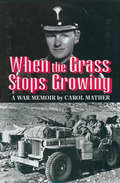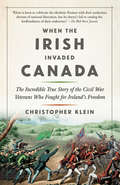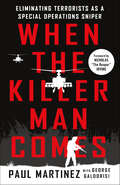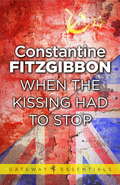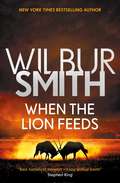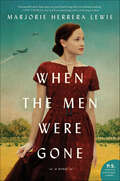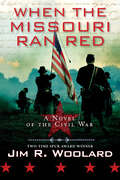- Table View
- List View
When Zachary Beaver Came to Town
by Kimberly Willis HoltNational Book Award WinnerThe red words painted on the trailer caused quite a buzz around town and before an hour was up, half of Antler was standing in line with two dollars clutched in hand to see the fattest boy in the world.Toby Wilson is having the toughest summer of his life. It's the summer his mother leaves for good; the summer his best friend's brother returns from Vietnam in a coffin. And the summer that Zachary Beaver, the fattest boy in the world, arrives in their sleepy Texas town. While it's a summer filled with heartache of every kind, it's also a summer of new friendships gained and old friendships renewed. And it's Zachary Beaver who turns the town of Antler upside down and leaves everyone, especially Toby, changed forever.With understated elegance, Kimberly Willis Holt tells a compelling coming-of-age story about a thirteen-year-old boy struggling to find himself in an imperfect world. At turns passionate and humorous, this extraordinary novel deals sensitively and candidly with obesity, war, and the true power of friendship.When Zachary Beaver Came to Town is the winner of the 1999 National Book Award for Young People's Literature. This title has Common Core connections.
When the Apricots Bloom: The evocative and emotionally powerful story of secrets, family and betrayal . . .
by Gina WilkinsonDISCOVER THE INTERNATIONAL BESTSELLER TODAY. Iraq, 2002. Three women - a secretary, an artist and a diplomat's wife - must decide what to sacrifice to protect their families, under the ruthless rule of a dictator . . .Have you discovered the international bestseller yet?'I truly felt for the memorable women risking their lives to protect themselves and their families . . . Baghdad springs into vivid violent life . . . Outstanding!' DINAH JEFFERIES, number one Sunday Times bestselling authorTwo can keep a secret, only when one of them is dead . . .'A deeply involving and important novel by a master storyteller' SUSAN WIGGS, number one New York Times bestselling author'Breathtaking...Riveting and profound! I adored this book!' Ellen Marie Wiseman, New York Times bestselling authorIraq, 2002.As night falls in Huda's fragrant garden of apricot trees, a breeze sweeps in from the desert, warning of visitors at her gate.A secretary at the Australian embassy in Baghdad, Huda has been ordered by the mukhabarat to befriend and spy upon the Deputy Ambassador's wife, Ally Wilson. To refuse is to risk her son being forced to join a deadly militia. But - though Huda cannot yet know it - Ally is keeping dangerous secrets of her own.Meanwhile, Huda's estranged friend Rania - a sheikh's daughter whose wealth is long gone - is battling to keep her own her own daughter safe from the dictator's men.As Huda and Rania are brought together again, through their relationship with Ally, their hidden pasts spill into the present. Facing betrayal at every turn, all three women must trust in a fragile, newfound loyalty, even as they discover how much each is willing to sacrifice to protect those they love . . .Lose yourself in this evocative, emotionally powerful and completely gripping international bestseller, where secrets are precious currency and three courageous women are tested to the limit by a horrifying power seemingly beyond their control.'Wilkinson weaves in the miasma of fear and distrust that characterized Hussein's regime with convincing detail. Richly drawn characters and high-stakes plot' PUBLISHERS WEEKLY'Rarely do we hear stories of those who are most oppressed. And stories from recent wars told by women about women are even rarer . . . Wilkinson's evocative language shapes the novel into one of suspense, intrigue and conspiracy; where female friendship is platformed . . . Although it is set within a backdrop of male power, where human grief is "almost a creature into itself", the power of a woman's intent for the safety of those she loves carries the novel through with a mesmerising pulsating force' SYDNEY MORNING HERALD(P)2020 Headline Publishing Group
When the Bombs Stopped: The Legacy of War in Rural Cambodia (Princeton Studies in International History and Politics #206)
by Erin LinHow undetonated bombs from a war that ended more than fifty years ago still affect Cambodian farmers and their land Over the course of the Vietnam War, the United States dropped 500,000 tons of bombs over Cambodia—more than the combined weight of every man, woman, and child in the country. What began as a secret CIA infiltration of Laos eventually expanded into Cambodia and escalated into a nine-year war over the Ho Chi Minh trail fought primarily with bombs. Fifty years after the last sortie, residents of rural Cambodia are still coping with the unexploded ordnance that covers their land. In When the Bombs Stopped, Erin Lin investigates the consequences of the US bombing campaign across postconflict Cambodia.Drawing on interviews, original econometric analysis, and extensive fieldwork, Lin upends the usual scholarly perspective on the war and its aftermath, presenting the viewpoint of those who suffered the bombing rather than those who dropped the bombs. She shows that Cambodian farmers stay at a subsistence level because much of their land is too dangerous to cultivate—and yet, paradoxically, the same bombs that endanger and impoverish farming communities also protect them, deterring predatory elites from grabbing and commodifying their land. Lin argues that the half-century legacy of American bombs has sedimented the war into the layers of contemporary Cambodian society. Policies aimed at developing or modernizing Cambodia, whether economic liberalization or authoritarian consolidation, must be realized in an environment haunted by the violence of the past. As the stories Lin captures show, the bombing served as a critical juncture in these farming villages, marking the place in time where development stopped.
When the Clouds Fell from the Sky: A Daughter's Search for Her Father in the Killing Fields of Cambodia
by Robert Carmichael'An outstanding book of astonishing power . . . One finishes it with an ache in the heart'Jon Swain, writer and foreign correspondent, author of River of Time'Like Auschwitz, like Stalin's purges, the mass murders of the Khmer Rouge are one of those extraordinary events that make us wonder about the human capacity for evil. Through a profoundly moving tale that weaves together the connected stories of a victim, his surviving family, and members of the regime, Robert Carmichael brings us into the heart of the darkness that took over Cambodia, bringing it alive in the way no mere statistics can. I've not seen a comparable book about these horrors.'Adam Hochschild, award-winning author of King Leopold's Ghost'What does it mean to say two million people lost their lives during the years of Khmer Rouge rule? The true answer can only be told in microcosm, as Robert Carmichael has done in this intimate and heartbreaking story of the disappearance of one man, and the decades of suffering that followed as his family searched for answers.'Seth Mydans, former Southeast Asia correspondent for the New York Times'As moving as it is well researched. Robert Carmichael's sharp prose and depth of knowledge of Cambodia's history transforms a daughter's search for her missing father into a nation's journey to find peace and reconciliation with its brutal history of genocide.'Loung Ung, author of First They Killed My FatherDuring the Khmer Rouge's four-year reign of terror, two million people died in Cambodia. In describing one family's quest to learn their husband's and father's fate and the war crimes trial of Comrade Duch, who ran the notorious S-21 prison in Phnom Penh, When the Clouds Fell from the Sky illuminates the tragedy of a nation.Having been found responsible for the deaths of more than 12,000 people, Duch was the first Khmer Rouge member to be jailed for crimes committed during Pol Pot's catastrophic 1975-9 rule during which millions were executed or died from starvation, illness and overwork. The Khmer Rouge closed Cambodia's borders, barred all communication with the outside world and sought to turn the clock back to Year Zero. They outlawed religion, markets, money, education and even the concept of family.But the revolution soon imploded, driven to destruction by the incompetence and paranoia of the leadership. Like hundreds of others, when he returned in 1977, Ouk Ket was utterly unaware of the terrors being wrought in the revolution's name.Carmichael has woven together the stories of five people whose lives intersected to traumatic effect: Duch; Ket's daughter, Neary, who was just two when her father disappeared; Ouk Ket himself; Ket's French wife, Martine; and Ket's cousin, Sady, who never left Cambodia and still lives there today.Through these personal stories and months spent following Duch's trial, Carmichael extrapolates from the experience of one man to tell the story of a nation. In doing so, he reaffirms the value of the individual, countering the Khmer Rouge's nihilistic maxim that: 'To keep you is no benefit, to destroy you is no loss.'
When the Clouds Fell from the Sky: A Daughter's Search for Her Father in the Killing Fields of Cambodia
by Robert Carmichael'Like Auschwitz, like Stalin's purges, the mass murders of the Khmer Rouge are one of those extraordinary events that make us wonder about the human capacity for evil. Through a profoundly moving tale that weaves together the connected stories of a victim, his surviving family, and members of the regime, Robert Carmichael brings us into the heart of the darkness that took over Cambodia, bringing it alive in the way no mere statistics can. I've not seen a comparable book about these horrors.'Adam Hochschild, award-winning author of King Leopold's Ghost'To keep you is no benefit, to destroy you is no loss.'During the Khmer Rouge's four-year rule of terror, two million people, or one in every four, Cambodians, died. In describing one family's decades-long quest to learn their husband's and father's fate and the war crimes trial of Comrade Duch (pronounced 'Doyk'), who ran the notorious S-21 prison in Phnom Penh, When the Clouds Fell from the Sky illuminates the tragedy of a nation. In 2012, Duch was sentenced to life imprisonment, having been found responsible for the deaths of more than 12,000 people. He was the first Khmer Rouge member to be jailed for crimes committed during Pol Pot's catastrophic 1975-9 rule during which millions were executed or died from starvation, illness and overwork as Cambodia underwent the most radical social transformation ever attempted. Designed to outdo even Mao's Great Leap Forward, it was an unparalleled disaster.At the same time, the Khmer Rouge closed Cambodia's borders, barred all communication with the outside world and sought to turn the clock back to Year Zero. They outlawed religion, markets, money, education and even the concept of family. The revolution soon imploded, driven to destruction by the incompetence and paranoia of the leadership. Yet instead of recognising their own failings, the leaders sought unseen enemies everywhere. In their pursuit of purity, they destroyed a nation. Like hundreds of other returnees, when he returned in 1977 Ouk Ket was utterly unaware of the terrors being wrought in the revolution's name. Hundreds of thousands of other Cambodians perished in nearly 200 institutions like S-21. To illustrate this era and its consequences, Robert Carmichael has woven together the stories of five people whose lives intersected to traumatic effect: Duch; Ket's daughter, Neary, who was just two when her father disappeared; Ouk Ket himself; Ket's French wife, Martine; and Ket's cousin, Sady, who never left Cambodia and still lives there today. Through these personal stories, the author's own research, numerous interviews and months spent following Duch's trial, Robert extrapolates from the experience of one man to tell the story of a nation. In doing so, he reaffirms the value of the individual, countering the Khmer Rouge's nihilistic maxim that: 'To keep you is no benefit, to destroy you is no loss.'
When the Clouds Fell from the Sky: A Daughter's Search for Her Father in the Killing Fields of Cambodia
by Robert Carmichael'An outstanding book of astonishing power . . . One finishes it with an ache in the heart'Jon Swain, writer and foreign correspondent, author of River of Time'Like Auschwitz, like Stalin's purges, the mass murders of the Khmer Rouge are one of those extraordinary events that make us wonder about the human capacity for evil. Through a profoundly moving tale that weaves together the connected stories of a victim, his surviving family, and members of the regime, Robert Carmichael brings us into the heart of the darkness that took over Cambodia, bringing it alive in the way no mere statistics can. I've not seen a comparable book about these horrors.'Adam Hochschild, award-winning author of King Leopold's Ghost'What does it mean to say two million people lost their lives during the years of Khmer Rouge rule? The true answer can only be told in microcosm, as Robert Carmichael has done in this intimate and heartbreaking story of the disappearance of one man, and the decades of suffering that followed as his family searched for answers.'Seth Mydans, former Southeast Asia correspondent for the New York Times'As moving as it is well researched. Robert Carmichael's sharp prose and depth of knowledge of Cambodia's history transforms a daughter's search for her missing father into a nation's journey to find peace and reconciliation with its brutal history of genocide.'Loung Ung, author of First They Killed My FatherDuring the Khmer Rouge's four-year reign of terror, two million people died in Cambodia. In describing one family's quest to learn their husband's and father's fate and the war crimes trial of Comrade Duch, who ran the notorious S-21 prison in Phnom Penh, When the Clouds Fell from the Sky illuminates the tragedy of a nation.Having been found responsible for the deaths of more than 12,000 people, Duch was the first Khmer Rouge member to be jailed for crimes committed during Pol Pot's catastrophic 1975-9 rule during which millions were executed or died from starvation, illness and overwork. The Khmer Rouge closed Cambodia's borders, barred all communication with the outside world and sought to turn the clock back to Year Zero. They outlawed religion, markets, money, education and even the concept of family.But the revolution soon imploded, driven to destruction by the incompetence and paranoia of the leadership. Like hundreds of others, when he returned in 1977, Ouk Ket was utterly unaware of the terrors being wrought in the revolution's name.Carmichael has woven together the stories of five people whose lives intersected to traumatic effect: Duch; Ket's daughter, Neary, who was just two when her father disappeared; Ouk Ket himself; Ket's French wife, Martine; and Ket's cousin, Sady, who never left Cambodia and still lives there today.Through these personal stories and months spent following Duch's trial, Carmichael extrapolates from the experience of one man to tell the story of a nation. In doing so, he reaffirms the value of the individual, countering the Khmer Rouge's nihilistic maxim that: 'To keep you is no benefit, to destroy you is no loss.'
When the Dawn Breaks
by Emma FraserTWO WOMEN. ONE SECRET. A HEART-BREAKING CHOICE. For fans of Ellie Dean, Milly Adams, Sheila Newberry and Rita Bradshaw, When the Dawn Breaks is a sweeping wartime saga that will take your breath away.Skye, 1903. Jessie, the young daughter of a local midwife, is determined to become a nurse one day, but family loss and heartache jeopardise her dreams. Isabel, the doctor's daughter, is planning to follow in her father's footsteps - even though medicine is not considered a fitting career for a woman. And then there's Archie, Jessie's older brother, whom Isabel just can't stay away from.After an unsettling encounter in the woods, Archie disappears, and all their lives are irrevocably changed . . .Years later, Isabel is a qualified doctor and Jessie is a nurse and when their paths cross again, neither is certain what the other woman knows about that fateful day. But when war breaks out and they find themselves working shoulder to shoulder, they have no option but to confront all they have kept hidden.Taking in Skye and Edinburgh, France and Serbia, When the Dawn Breaks is a sweeping wartime story of two determined women and the dark secret that will bind them forever . . .Shortlisted for the Epic Novel award in the Romantic Novelists Association Awards 2014.
When the Dawn Breaks
by Emma FraserTWO WOMEN. ONE SECRET. A HEART-BREAKING CHOICE. For fans of Ellie Dean, Milly Adams, Sheila Newberry and Rita Bradshaw, When the Dawn Breaks is a sweeping wartime saga that will take your breath away.Skye, 1903. Jessie, the young daughter of a local midwife, is determined to become a nurse one day, but family loss and heartache jeopardise her dreams. Isabel, the doctor's daughter, is planning to follow in her father's footsteps - even though medicine is not considered a fitting career for a woman. And then there's Archie, Jessie's older brother, whom Isabel just can't stay away from.After an unsettling encounter in the woods, Archie disappears, and all their lives are irrevocably changed . . .Years later, Isabel is a qualified doctor and Jessie is a nurse and when their paths cross again, neither is certain what the other woman knows about that fateful day. But when war breaks out and they find themselves working shoulder to shoulder, they have no option but to confront all they have kept hidden.Taking in Skye and Edinburgh, France and Serbia, When the Dawn Breaks is a sweeping wartime story of two determined women and the dark secret that will bind them forever . . .Shortlisted for the Epic Novel award in the Romantic Novelists Association Awards 2014.
When the Dawn Breaks
by Emma FraserTwo women. One secret. A heart-breaking choice.Skye, 1903. Jessie, the young daughter of a local midwife, is determined to become a nurse one day, but family loss and heartache jeopardise her dreams. Isabel, the doctor's daughter, is planning to follow in her father's footsteps - even though medicine is not considered a fitting career for a woman. And then there's Archie, Jessie's older brother, whom Isabel just can't stay away from.After an unsettling encounter in the woods, Archie disappears, and all their lives are irrevocably changed . . .Years later, Isabel is a qualified doctor and Jessie is a nurse and when their paths cross again, neither is certain what the other woman knows about that fateful day. But when war breaks out and they find themselves working shoulder to shoulder, they have no option but to confront all they have kept hidden.Taking in Skye and Edinburgh, France and Serbia, When the Dawn Breaks is a sweeping wartime story of two determined women and the dark secret that will bind them forever . . .
When the Doves Disappeared
by Sofi Oksanen Lola RogersFrom the acclaimed author of Purge ("a stirring and humane work of art" --The New Republic) comes a riveting, chillingly relevant new novel of occupation, resistance, and collaboration in Eastern Europe.1941: In Communist-ruled, war-ravaged Estonia, two men are fleeing from the Red Army--Roland, a fiercely principled freedom fighter, and his slippery cousin Edgar. When the Germans arrive, Roland goes into hiding; Edgar abandons his unhappy wife, Juudit, and takes on a new identity as a loyal supporter of the Nazi regime . . . 1963: Estonia is again under Communist control, independence even further out of reach behind the Iron Curtain. Edgar is now a Soviet apparatchik, desperate to hide the secrets of his past life and stay close to those in power. But his fate remains entangled with Roland's, and with Juudit, who may hold the key to uncovering the truth . . . Great acts of deception and heroism collide in this masterful story of surveillance, passion, and betrayal, as Sofi Oksanen brings to life the frailty--and the resilience--of humanity under the shadow of tyranny. This eBook edition includes a Reading Group Guide.
When the Doves Disappeared: A Novel
by Sofi OksanenFrom the internationally acclaimed author of Purge comes a chillingly suspenseful, deftly woven new novel that opens up a little-known yet still controversial chapter of history: the occupation, resistance, and collaboration in Estonia during and after World War II.1941: In Communist-ruled, war-ravaged Estonia, two men are fleeing from the Red Army — Roland, a fiercely principled freedom fighter, and his slippery cousin Edgar. When the Germans arrive, Roland goes into hiding; Edgar abandons his unhappy wife, Juudit, and takes on a new identity as a loyal supporter of the Nazi regime … 1963: Estonia is again under Communist control, independence even further out of reach behind the Iron Curtain. Edgar is now a Soviet apparatchik, desperate to hide the secrets of his past life and stay close to those in power. But his fate remains entangled with Roland’s, and with Juudit, who may hold the key to uncovering the truth…In a masterfully told story that moves between the tumult of these two brutally repressive eras — a story of surveillance, deception, passion, and betrayal — Sofi Oksanen brings to life both the frailty, and the resilience, of humanity under the shadow of tyranny.
When the Eagle Hunts (Eagle #10)
by Simon ScarrowIF YOU DON'T KNOW SIMON SCARROW, YOU DON'T KNOW ROME!WHEN THE EAGLE HUNTS is the compelling third novel in Simon Scarrow's bestselling Eagles of the Empire series. For fans of Bernard Cornwell and Conn Iggulden. 'Scarrow's [novels] rank with the best' IndependentBritannia, AD 44. Cato, a thoughtful junior officer in the Roman army, and his commanding centurion, Macro, are simply pawns in Rome's lust to conquer Britain. During the freezing winter, the two men and their legion fight the native savages in hand-to-hand battles that haunt Cato for days after.But in a place full of enemies, the most vicious are the Druids of the Dark Moon; brutal, merciless men who have captured the wife and children of General Plautius himself.So Macro and Cato are given a mission: to travel deep into enemy territory and recover the hostages. If they fail, the fate of the Roman army may just hang in the balance...
When the Eagle Hunts: Cato & Macro: Book 3 (Eagle #15)
by Simon ScarrowWHEN THE EAGLE HUNTS is the compelling third novel in Simon Scarrow's bestselling Eagles of the Empire series. For fans of Bernard Cornwell and Conn Iggulden.After a series of bloody battles, Camulodunum (modern-day Colchester) has fallen to the invading Roman army. The Emperor has returned to Rome, leaving the fearless Centurion Macro and his young Optio, Cato, to rest and regroup, along with the rest of the Second Legion. As their leader General Plautius plans the next phase of their campaign, word arrives that the ship carrying his family to join him was wrecked in a storm off the south coast. His wife and children have fallen into the hands of a dark sect of Druids, who now demand the return of those of their brotherhood taken prisoner by the Romans. Unless their demands are met within one month, Plautius's family will be burned alive. Will Cato and Macro discover where the Druids are hiding their hostages? And can they find some way to rescue them before time runs out?
When the Elephants Dance
by Tess Uriza HoltheAs the U.S. and Japan battle over the Philippines late in WWII, several families hide in a cellar where they glean hope from stories and folktales. These stories of love, survival, and family blend the supernatural with the rich, little known history of the Philippines, the centuries of Spanish colonization, the power of the Catholic church, and the colorful worlds of the Spanish, Mestizo, and Filipino cultures.
When the Emperor Was Divine
by Julie OtsukaFrom the bestselling, award-winning author of The Buddha in the Attic and The Swimmers, this commanding debut novel paints a portrait of the Japanese American incarceration camps that is both a haunting evocation of a family in wartime and a resonant lesson for our times.On a sunny day in Berkeley, California, in 1942, a woman sees a sign in a post office window, returns to her home, and matter-of-factly begins to pack her family's possessions. Like thousands of other Japanese Americans they have been reclassified, virtually overnight, as enemy aliens and are about to be uprooted from their home and sent to a dusty incarceration camp in the Utah desert. In this lean and devastatingly evocative first novel, Julie Otsuka tells their story from five flawlessly realized points of view and conveys the exact emotional texture of their experience: the thin-walled barracks and barbed-wire fences, the omnipresent fear and loneliness, the unheralded feats of heroism. When the Emperor Was Divine is a work of enormous power that makes a shameful episode of our history as immediate as today's headlines.
When the Germans Come
by David Hewson1940: The people of Dover, England, wait for the Nazi invasion. But what if Hitler&’s agents are already among them? &“A true master of his craft.&” —Craig Russell, author of The Devil Aspect Canadian journalist Jessica Marshall is reporting from Dover, a town on the brink of a German attack. But her stories never make it into print . . . Meanwhile, Louis Renard, an intelligent, damaged man and onetime Scotland Yard detective, is recuperating from wounds received at Dunkirk and is working in Dover&’s barely functioning police station. When a dancer is found murdered in a secret underground bunker, Renard refuses to turn a blind eye, and Marshall smells a scoop. As the mystery deepens, Renard begins to dig deeper into the murdered woman&’s background, while Marshall is lured further into a dangerous scheme, just as the threat from the looming invasion gets closer . . .When the Germans Come is a gripping thriller and an examination of the state of wartime England, when Hitler&’s forces gathered across the Channel and threatened the country&’s very existence.Praise for David Hewson &“[A] character-rich, history-drenched reading experience.&” —Booklist&“Hewson educates and entertains in equal measure.&” —Publishers Weekly &“Vivid and compelling. At once a richly wrought thriller, a love story and a warning that spans decades. I was thinking about this book for days after I&’d closed it.&” —Sarah Pinborough, bestselling author of Behind Her Eyes
When the Grass Stops Growing: A War Memoir
by Carol MatherSir Carol Mather MC had a fascinating war. His memoirs, which quickly sold out, covers service with Sterling's SAS, his escape from a POW camp in Italy and his two tours on Montgomery's small personal staff. No wonder this book was widely reviewed and described as 'a classic' in The Spectator.
When the Irish Invaded Canada: The Incredible True Story of the Civil War Veterans Who Fought for Ireland's Freedom
by Christopher KleinThe outlandish, untold story of the Irish American revolutionaries who tried to free Ireland by invading CanadaJust over a year after Robert E. Lee relinquished his sword, a band of Union and Confederate veterans dusted off their guns. But these former foes had no intention of reigniting the Civil War. Instead, they fought side by side to undertake one of the most fantastical missions in military history: to seize the British province of Canada and to hold it hostage until the independence of Ireland was secured.By the time that these invasions--known collectively as the Fenian raids--began in 1866, Ireland had been Britain's unwilling colony for seven hundred years. Thousands of Civil War veterans who had fled to the United States rather than perish in the wake of the Great Hunger still considered themselves Irishmen first, Americans second. With the tacit support of the U.S. government and inspired by a previous generation of successful American revolutionaries, the group that carried out a series of five attacks on Canada--the Fenian Brotherhood--established a state in exile, planned prison breaks, weathered infighting, stockpiled weapons, and assassinated enemies. Defiantly, this motley group, including a one-armed war hero, an English spy infiltrating rebel forces, and a radical who staged his own funeral, managed to seize a piece of Canada--if only for three days.When the Irish Invaded Canada is the untold tale of a band of fiercely patriotic Irish Americans and their chapter in Ireland's centuries-long fight for independence. Inspiring, lively, and often undeniably comic, this is a story of fighting for what's right in the face of impossible odds.
When the Killer Man Comes: Eliminating Terrorists As a Special Operations Sniper
by Paul Martinez Cap. George GaldorisiThe thrilling combat memoir by special operations sniper Paul Martinez, who spent seven years in Special Operations and was a sniper assigned to 3rd Ranger Battalion.America has one force with the single mission of direct action to capture or kill the enemy. That force is the 75th Ranger Regiment. Staff Sergeant Paul Martinez was a Ranger Sniper with the 75th Rangers during the desperate fighting in Afghanistan in 2011 when the United States made the decision to try to withdraw from Afghanistan. It was never going to be easy. There were still a large number of senior Taliban and al Qaeda leaders and other terrorists in secure locations throughout that country. If the United States withdrew from Afghanistan with these terrorists and their networks still intact, they could quickly take over the country and undo all the gains that we made.These terrorists needed to be eliminated, and there was only one force to do it—the Rangers. The mission was to capture or kill as many of these terrorists as possible. Paul Martinez was one of the deadliest snipers assigned to this unit, dubbed “Team Merrill,” after the Marauders of World War II fame. Martinez and his fellow Rangers faced near-impossible odds taking on an enemy who knew they were coming and who employed every conceivable tactic to kill these Rangers. In When the Killer Man Comes, Martinez tells the harrowing true story of how he and his team hunted America's enemies in an operation that would have repercussions that are still felt today.
When the Kissing Had to Stop
by Constantine FitzgibbonThe classic novel of the Cold War. There are well-meaning Ban-the-Bomb types, most of whom are destined for labour camps or death when the People's Republic of Britain is eventually established, with the forceful help of an interim government's Russian friends. The horrifying aspect of the book, as Fitzgibbons subtly points out, is that the steps it charts, and the inhuman cruelties with which it ends, are not that far removed from the actual experiences of several countries which Russia brought within its orbit after 1945. It is a chilling reminder of what might have been and what might yet be.
When the Kissing Had to Stop (Gateway Essentials #493)
by Constantine FitzgibbonThe classic novel of the Cold War. There are well-meaning Ban-the-Bomb types, most of whom are destined for labour camps or death when the People's Republic of Britain is eventually established, with the forceful help of an interim government's Russian friends. The horrifying aspect of the book, as Fitzgibbons subtly points out, is that the steps it charts, and the inhuman cruelties with which it ends, are not that far removed from the actual experiences of several countries which Russia brought within its orbit after 1945. It is a chilling reminder of what might have been and what might yet be.
When the Lights Go Down: The glamour of the cinema heals the heartbreak of war...
by Pamela EvansIt is 1938 and the threat of war looms on the streets of London. But, when the lights go down in the cinema aisles, usherette Daisy Blake is transported to a world of glamour and romance. Among the staff there is much merriment and Daisy soon falls in love with the handsome organist, Al Dawson. Then war is declared and, just after Al leaves for the frontline, Daisy discovers she's pregnant. Her mother is distraught; she doesn't think Al is right for her daughter and when Daisy's letters to him go unanswered, her mother encourages her to marry John, the cinema's projectionist, to spare her further heartache.As the blitz rages over London and disaster strikes, Daisy's morale is boosted by her work and her young son, Sam, brings her comfort and joy in the troubled times ahead...(P)2016 Headline Digital
When the Lion Feeds: The Courtney Series 1 (The Courtney Series: The When The Lion Feeds Trilogy #1)
by Wilbur SmithA Courtney series adventure - Book 1 in the When the Lion Feeds trilogyA Courtney series adventure: When the Lion Feeds trilogy - Book 1 "'What is it?' Sean felt the first tingle of alarm. 'N'yoni', said Mbejane softly and Sean saw them. A dark pall, still so far off that they could not distinguish the individual birds: only a shadow, a thin dark shadow in the sky. Watching it Sean was suddenly cold in the hot noonday sun. He started to run." Brothers by birth. Enemies by blood. Natal, 1860; the Courtney twins are born. Heirs to their father's fortune, destiny divides the boys from the start -- Garrick is eager to stay indoors with a book and escape the hardships of cattle-rearing, while Sean, strong and much-loved, wants to try his hand at everything. When Garrick is forced to take ownership of their farm, Sean must explore the opportunities awaiting him: the rush and horrors of the Zulu Wars, the women who will fall for his charms, the rise and fall of gold fever and the deadly thrills of big game hunting on the African plains. But will Sean's adventures really be his making -- and at what ultimate cost...?
When the Men Were Gone: A Novel
by Marjorie Herrera Lewis“…Sublimely ties together the drama of high school football, gender politics, and the impact of war on a small town in Texas.” – Sports IllustratedA 2019 One of the Best Books So Far--Newsweek.comA cross between Friday Night Lights and The Atomic City Girls, When The Men Were Gone is a debut historical novel based on the true story of Tylene Wilson, a woman in 1940's Texas who, in spite of extreme opposition, became a female football coach in order to keep her students from heading off to war.Football is the heartbeat of Brownwood, Texas. Every Friday night for as long as assistant principal Tylene Wilson can remember, the entire town has gathered in the stands, cheering their boys on. Each September brings with it the hope of a good season and a sense of unity and optimism.Now, the war has changed everything. Most of the Brownwood men over 18 and under 45 are off fighting, and in a small town the possibilities are limited. Could this mean a season without football? But no one counted on Tylene, who learned the game at her daddy’s knee. She knows more about it than most men, so she does the unthinkable, convincing the school to let her take on the job of coach. Faced with extreme opposition—by the press, the community, rival coaches, and referees and even the players themselves—Tylene remains resolute. And when her boys rally around her, she leads the team—and the town—to a Friday night and a subsequent season they will never forget. Based on a true story, When the Men Were Gone is a powerful and vibrant novel of perseverance and personal courage.
When the Missouri Ran Red: A Novel of the Civil War
by Jim R. WoolardSet in the final devastating months of the American Civil War, this powerhouse of a novel from award-winning author Jim R. Woolard follows one man&’s harrowing journey from Confederate captive to Union prisoner to unchained force of vengeance . . . Autumn, 1864. Rebel bushwhackers have seized and looted a small town in Missouri. Wounded and left for dead by his half-brother, seventeen-year-old Owen Wainwright is captured and conscripted by the Confederate Army. As the troops&’ blacksmith, he witnesses the horrors of war firsthand: the savagery of General Selby&’s Iron Brigade, the massacres of Union troops, the bloody battles at Lexington, Westport, and Mine Creek. Against all odds, Owen survives with the help of an unlikely ally—a new friend in arms and the only person he trusts. But if fate is cruel, war can be crueler . . . Caught in the crossfire of a deadly Yankee ambush, Owen is arrested and jailed in a Union prison. Beaten and brutalized by guards, he begins to give up hope—until a U.S. Marshal comes to him with an unusual offer. Owen&’s traitorous half-brother is wanted for murder. If Owen agrees to help the U.S. Marshal infiltrate the Texas winter camp of Confederate guerillas—and bring his brother to justice—Owen will have both his freedom and his revenge. But the risks are great. The price of getting caught is death. Filled with raw human drama, blistering battle scenes, and vivid historical details, When the Missouri Ran Red is destined to be a classic in the field and a treasure for Civil War buffs.
